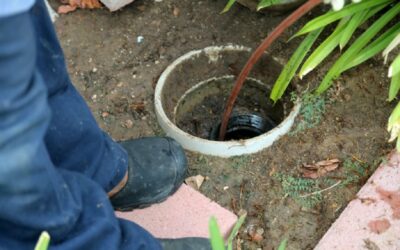The pipes drain, and plumbing fixtures inside your home connect to the primary sewer line’s most significant and crucial component of your entire plumbing network. Therefore, ensuring that this essential part of your system is in good condition and working order is worthwhile.
Symptoms and Signs of a Broken Sewer Line
Your main sewer line could be blocked, ruptured, or even broken. Knowing the typical indicators of a damaged sewer line can help detect the issue early and fix it before further damage occurs.
The tell-tale indications of a broken sewer line include:
- The Smell of Sewer Gas – This is the most obvious sign of a broken drainpipe. The smell that emanates from your drains could be a signal to check further. The tell-tale indications of a broken sewer line include:
- Slow Drains – If you’ve more than one pipe draining slowly, it could indicate a broken sewer line.
- Green, Lush, and Bright Areas of Your Yard – Suppose a specific part of your yard is growing and is distinct from the plants around it. In that case, it could indicate an unreliable sewer line.
- Insects and Rodents – Rodents and insects can squeeze through the sewer line’s cracks and make it their home.
- Mold and Mildew – Dry spots on your ceilings, walls, and floors indicate a collapsed sewer line or broken water pipe.
Knowing what causes a sewer line to break can give you the ability to stop it from happening. Discover why sewer lines rupture and take the required precautions to keep your plumbing system in good shape.
Top 5 Reasons for Broken Sewer Lines
1: Pipe Settlement
Changes in the soil or sediment could damage a drainage line or sewer pipe. When the soil around the pipe shifts or becomes settled and the tube is damaged, it could cause a slope downhill that is not in the right direction or sink into the soil. The lower portion of the pipe can build up waste and paper and cause frequent blockages to the flow.
2: Improper Sewer Line Installation
Most pipes and plumbing systems will be constructed on a downslope, ensuring that waste and water flow along with gravity. If the sewer lines aren’t built in a precise amount of slope downward and support, the pipes eventually break and settle.
3: Tree Root Infiltration
As they naturally expand toward water sources, the tree roots may become attracted by sewer lines. When they connect to that sewer pipe, they are wrapped around and eventually break as they expand. As the tree roots develop, they can split the line and allow sewage to leak out of the yard and around. Tree roots can also continue to grow into pipes in the process of absorbing water, leading to an entire or partial blockage in the whole line.
4: Pipe Deterioration and Damage
Regular chemical cleaning of blocked or clogged drains can lead to corrosion and irreparable pipe damage. You can break down your sewer line pipes if your water is discolored, the water pressure has altered, or you notice leaks.
5: Pouring Grease Down the Drain or Flushing Debris
Only toilet paper must flush down the toilet to ensure the health of your pipes and your main sewer line. Any other waste can lead to problems with drainage. Fats, grease, and oils are the most dangerous elements of blocked pipes. When the oil cools, it solidifies, sticks to the pipes’ internal lines, and clogs the pipe.
How to Safeguard Your Sewer Line
You can’t always avoid the causes of a weak sewage line. You can take action to improve the security of your pipes and lengthen the lifespan of your main sewer line.
If you spot trees in the way of the sewer lines, get rid of the trees as soon as they cause further damage to the sewer line. Be diligent about what you flush down the toilet or pour into your drains. And if you’d like to be proactive in preventing future damage, call us at (613) 317-1682 or email us at info@ottawaplumbingservice.com to the experts at Ottawa Plumbing Service to provide a camera inspection of your drains. We’re here to assist you!



